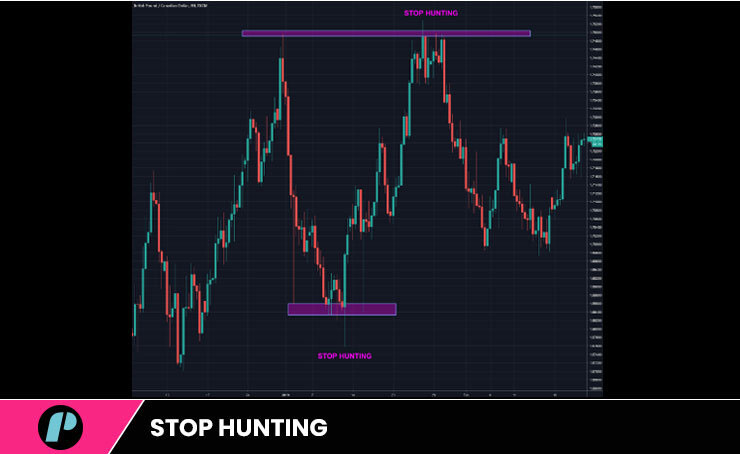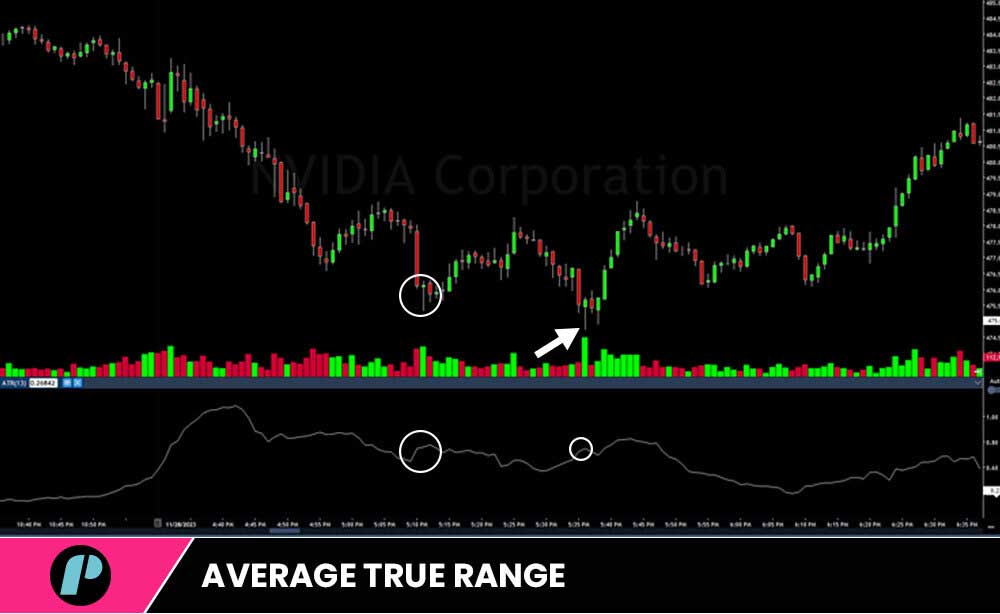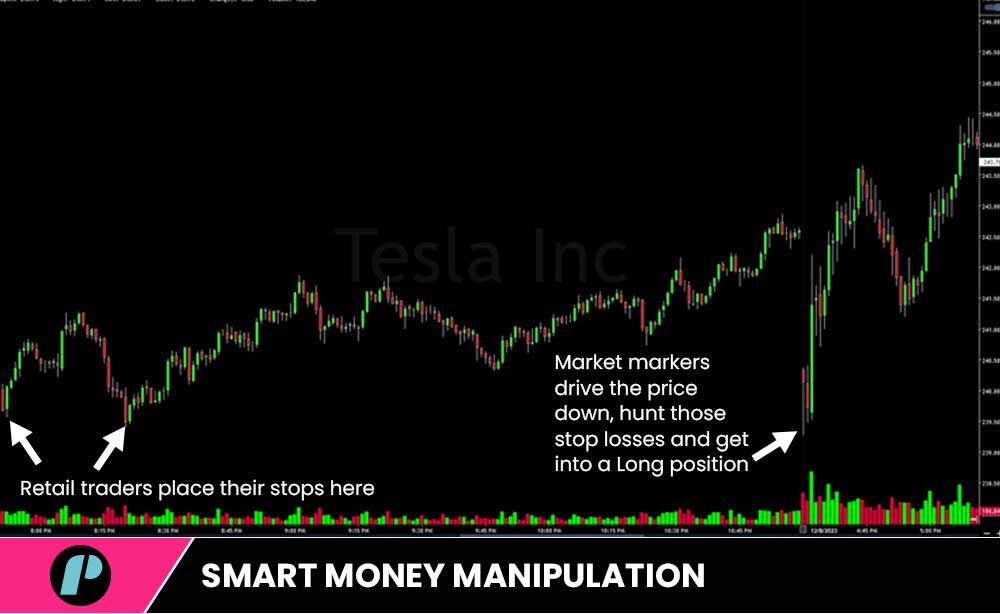
Introduction
Have you ever had the impression of looking at the perfect setup on your screen, placing a trade with confidence, and witnessing price suddenly shooting in the opposite direction, taking out your stop-loss, and then, as if nothing ever happened, returning to the direction you originally predicted?
Well, that could be more than just a mere impression. According to some traders, It could be the result of Stop-Loss Hunting, an act of market manipulation by Smart Money, aimed at creating liquidity by pushing a stock price toward areas with a high concentration of retail stop-orders.
The objective of this article is to explain what it means to hunt stops, who is likely to be doing it, and how you can protect yourself from being stop-hunted.
What is Stop Loss Hunting?
Stop-loss hunting occurs when large market participants, such as institutional investors or powerful traders, intentionally manipulate stock prices causing temporary volatility and price movements able to trigger stop-losses placed by retail traders thus creating liquidity for their own larger trades.
How does Smart Money know where retail traders’ stop-losses are?
Estimating where most retail traders’ stop-loss orders are placed is not that complicated. A great number of them tend to use the same technical analysis strategies and indicators. This means that many traders would often end up placing their stop-loss orders around the same levels (for example, just below the support or just above the resistance levels of a trend). The result is the creation of at least two areas where a high number of Stop-Loss orders are highly concentrated.

When seen on a chart, it becomes quite easy for everyone to predict where these areas are and even more so for Smart Money traders.
How does Smart Money manipulate prices when hunting stops?
Large market participants often have huge amounts of capital to manage and, although it might sound counterintuitive, this does present some disadvantages compared to retail traders.
Smart Money traders can find it difficult to place large orders and see them fulfilled at the desired price. More often than not, they find themselves having to split big trades into smaller ones, place their orders across longer intervals of time, and distribute them amongst different brokers. However, these operations require time and it still can’t guarantee that any slippage would be limited.
Because their capital is so large, Smart Money traders can “sacrify” a small portion of it to rapidly buy or sell a large number of shares within one or two trades to push a stock price toward retail traders’ stop-loss and drive it far enough to trigger as many of them as possible.
Once triggered, stop-loss orders convert into market orders, and all positions are liquidated at the next available price. This means that when stop-losses below the support line are triggered, there will be a further sudden increase in selling pressure and price will keep dropping lower, whilst when the stop-losses above the resistance line are triggered, the opposite is true. It is at this point that Smart Money traders can take advantage of the abundance of liquidity and a lower price at which to open a long position or a higher price at which to place a short one.
The primary reasons behind stop-loss hunting are creating liquidity in the market to execute larger trades and obtaining a more favorable price at which to trade. By triggering stop-loss orders, these market participants aim to take advantage of the chain reaction created by so many stop-loss orders being triggered at the same time, whilst gaining a better price that enables them to accumulate or offload stock more efficiently.
What can you do to protect your trades from stop hunters?
Now that we have discussed what Stop Hunting is and why some larger market participants choose to adopt it as a strategy (despite clear laws forbidding it), it is only natural that traders ask themselves if there is anything at all they could be doing to avoid falling in a Smart Money’s stop-hunt trap, and… of course there is.
According to ICT’s Smart Money Concept, the consequences of Stop Hunting can be disastrous for traders who fail to manage their risk properly as well as for those who fail to realize that “Stop Hunts are real, can happen, and do happen”.
Traders use stop-loss orders as a risk management tool to protect their trades and investments. However, this reliance on stop-losses creates a vulnerability that can be exploited. Larger market participants may intentionally drive prices up or down to trigger these stop losses, causing panic buying and selling and causing further downward or upward pressure on a security’s value.
So… what are the recommendations to avoid being stop-hunted?
-
Stay away from the mass
One of the first things a trader should do is to learn technical analysis with particular emphasis on support and resistance levels. This knowledge will make it easy to estimate where most retail traders’ stop-loss orders are likely to be placed and the levels that price could attempt to breach during a Stop-Loss Hunt. A trader who chooses to place a stop-loss should do so well away from such an area.
Traders can avoid falling victim to stop-loss hunting by using customized stop-loss levels for their positions, by placing stop losses at prices less likely to be hit by normal market fluctuations plus a little extra distance to also mitigate the risks associated with stop-loss hunting.
-
Monitor market liquidity
In the Stock Market, Market Liquidity refers to the ease with which a stock can be traded (bought or sold) without affecting the price. Keeping track of market liquidity conditions is crucial.
During times of low liquidity, the risk of stop-loss hunting may increase. By paying attention to factors such as trading volume, bid-ask spreads, and market order imbalances, traders can get an insight into the liquidity level of the stock they are trading and adjust their strategies accordingly.
-
Use different methods and strategies to set your stop-loss orders
Many traders use specific technical indicators to set their stop-loss orders and this, amongst other things, can prevent them from falling victim to any stop-hunt taking place. The ATR is one such indicator.

The ATR (Average True Range) is a technical indicator that measures the volatility of a security by indicating the average of the true range of a security over a specific period.
Traders know that normal price fluctuation tends to remain within the ATR value and use this information to set their stop-loss orders accordingly. A stop-loss set at 1.5xATR or even 2xATR, for example, would give ample space to tolerate a stop-hunt without it breaching the stop-loss and automatically close the trade at a loss.
-
Trade with the Smart Money
If the concept of finding the market maker manipulation is understood, then the next move will be to find those levels, wait for the stop hunt to occur, and use that to your advantage.
Conclusion
Stop-loss Hunting is a practice used by Smart Money to take advantage of the stop-loss orders placed by retail traders. Understanding how it is done and why, and trying to take precautions by setting our Stop-loss order differently, can help us to reduce our risk and protect our capital.
So remember:
By being aware of support and resistance levels, using customized stop-loss, and avoiding smaller time frames in times of low liquidity, it becomes possible to reduce our exposure to the risk of Stop-Hunting.
Hope this helps.
Trade on, traders.
If you liked this post make sure to share it!







